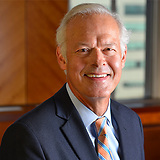How does a judge decide a case? What law, facts, judicial temperament, political or other factors, tangible and intangible make a difference? There’s often no easy answer, no crystal ball prognostication. Multiply that by 9 in the case of the United States Supreme Court. The labels “conservative” and “liberal” are used as a shortcut (media and others) to describe the Justices. But if it were as simple as liberal vs. conservative, blue vs. red, then how is it that Chief Justice Roberts (appointed by a Republican President/labelled conservative) writes the majority opinion upholding the constitutionality of the Affordable Care Act (the signature legislation of a Democrat President/labelled liberal)? Labels don’t really tell the story.
Justices have to decide cases; all of the Justices have a vote. The majority opinion writer often has to be supremely creative in crafting a decision that persuades at least most of his or her colleagues. Getting consensus these days on major issues of public import is hard work, and it takes creative judging to get it done. Of course, since law is based on precedent ( the principle of stare decisis), courts prefer to couch their decisions in precedent rather than saying they are creating something new. But creating something new is sometimes, not always, the way the hard cases get resolved
Take for example the Court’s campaign finance decision , McCutcheon vs. Federal Election Commission, decided this April. Chief Justice Roberts et al struck down aggregate limits on contributions as violating the First Amendment. The Court decided that the only legitimate governmental interest was “in preventing quid pro quo corruption or its appearance.” What is quid pro quo corruption? The First Amendment doesn’t use the words “quid pro quo corruption”. Justice Roberts’ definition: “direct exchange of an official act for money” or “dollars for political favors”. So, except to regulate something akin to bribery, Congress will bump into the First Amendment if it tries to regulate the speech of political contributions. The supreme creativity comes in when you consider that it’s the judicial definition of corruption that shapes what’s ok or not ok under the First Amendment. The word is like an accordion: the broader you define corruption, the more room there is for Congress to Act; the narrower you define it, the less room. The Court chose to compress the accordion to “dollars for favors”. In a nod to creating something new, Chief Justice Roberts conceded the point made by Justice Stevens that the Court has “not always spoken about corruption in a clear or consistent voice”.
How does a judge decide a case? Sometimes it’s about speaking with a new voice about a single word, corruption, that doesn’t appear in the First Amendment itself but now powerfully shapes its scope.

